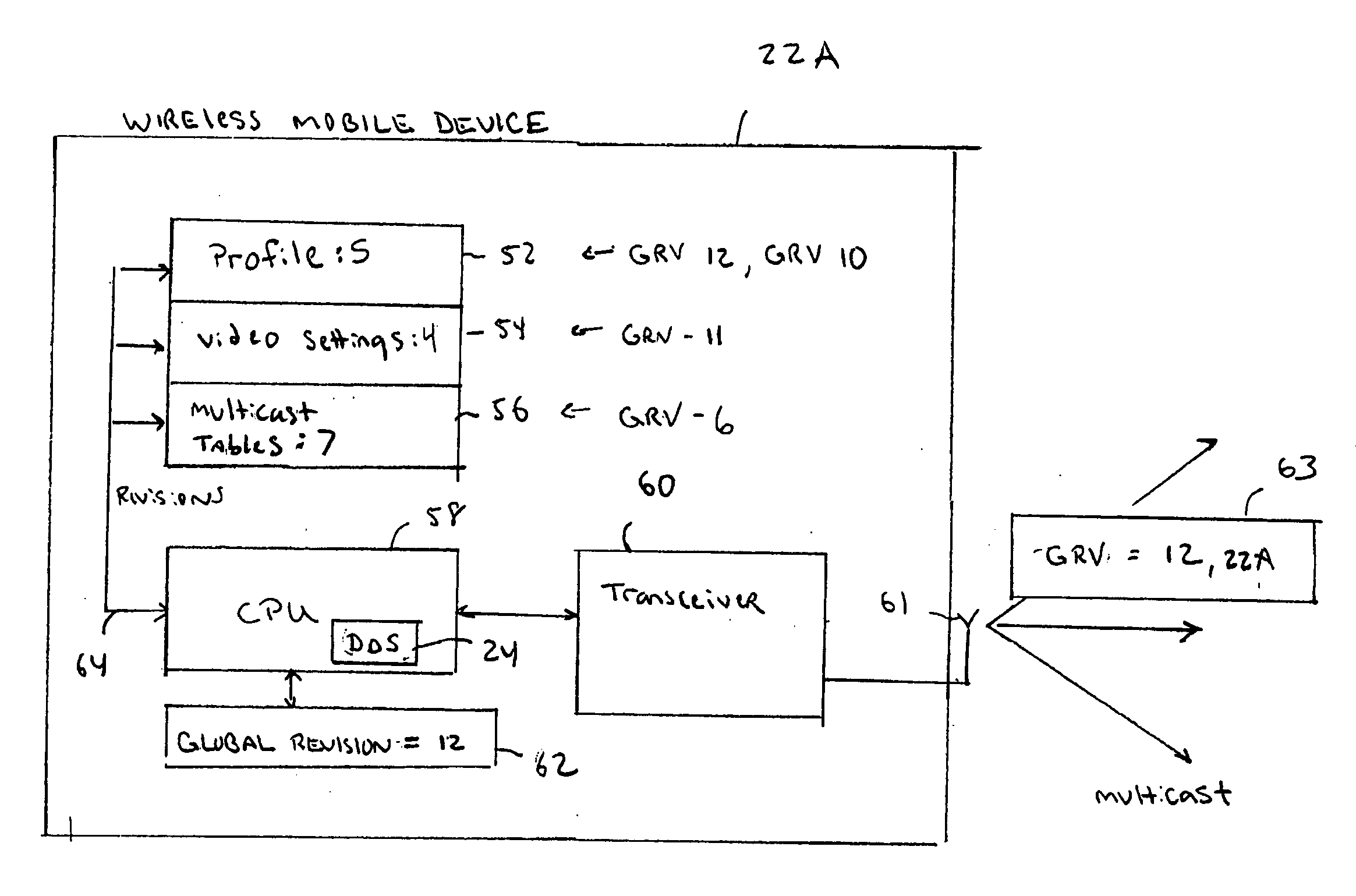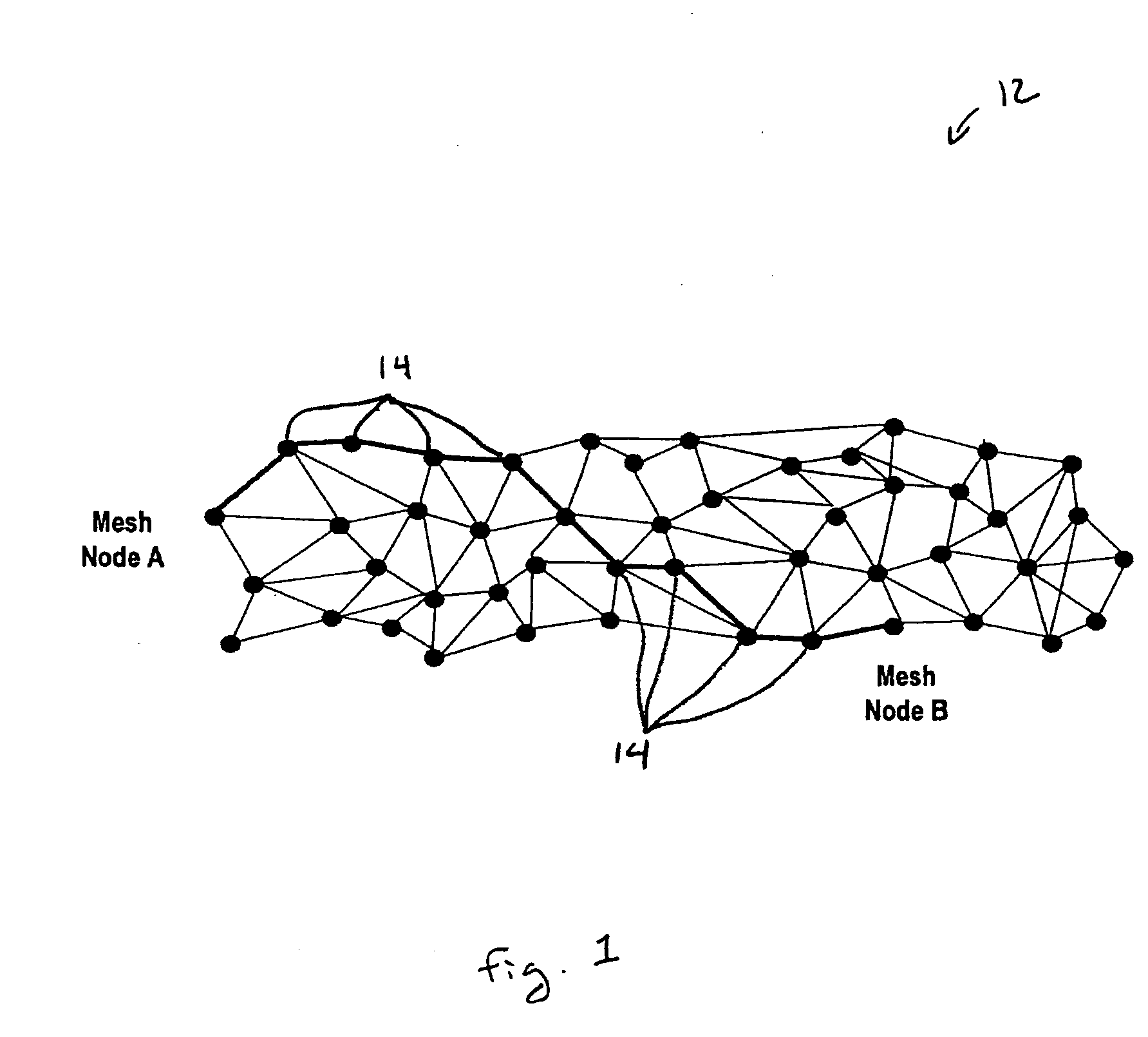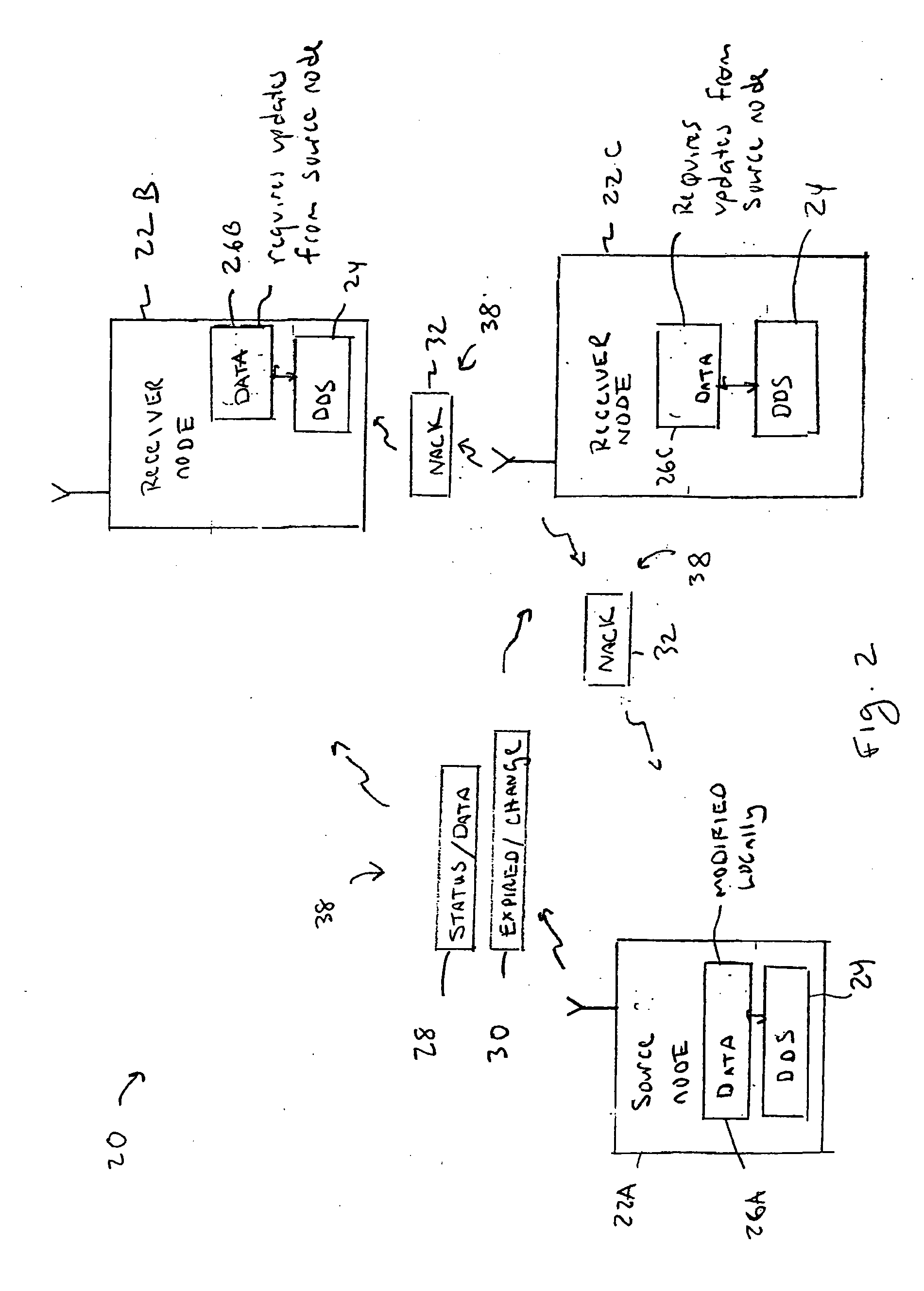Reliable message distribution in an ad hoc mesh network
a mesh network and message technology, applied in the field of reliable message distribution in an ad hoc mesh network, can solve the problems of inefficiency of current techniques for maintaining data consistency between different mobile nodes, and achieve the effect of reasonable reliability and minimal traffi
- Summary
- Abstract
- Description
- Claims
- Application Information
AI Technical Summary
Benefits of technology
Problems solved by technology
Method used
Image
Examples
Embodiment Construction
[0018]FIG. 2 shows several nodes 22 that may operate in a mesh network 20 similar to the mesh network 12 previously shown in FIG. 1. The nodes 22 can be any type of mobile device that conducts wireless or wired peer to peer mesh communications. For example, personal computers with wireless modems, Personal Digital Assistants (PDAs), cell phones, etc. Other nodes 22 can be wireless routers that communicate to other nodes through wired or wireless IP networks.
[0019] The mobile devices 22 can move ad-hoc into and out of the network 20 and dynamically reestablish peer-to-peer communications with the other nodes. It may be necessary that each individual node 22A, 22B and 22C have some or all of the same versions for different data items 26. The data items 26 in one example, may be certain configuration data used by the nodes 22 for communicating with other nodes. For example, the configuration data 26 may include node profile information, video settings, etc. In another example, the dat...
PUM
 Login to View More
Login to View More Abstract
Description
Claims
Application Information
 Login to View More
Login to View More - R&D
- Intellectual Property
- Life Sciences
- Materials
- Tech Scout
- Unparalleled Data Quality
- Higher Quality Content
- 60% Fewer Hallucinations
Browse by: Latest US Patents, China's latest patents, Technical Efficacy Thesaurus, Application Domain, Technology Topic, Popular Technical Reports.
© 2025 PatSnap. All rights reserved.Legal|Privacy policy|Modern Slavery Act Transparency Statement|Sitemap|About US| Contact US: help@patsnap.com



